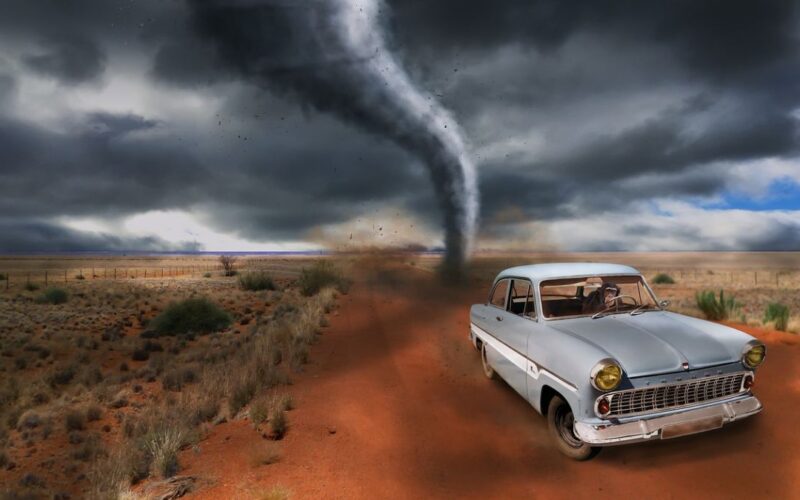Tornadoes are among the most powerful and destructive natural phenomena on Earth, capable of wreaking havoc with their ferocious winds and swirling vortexes. While tornadoes may seem mysterious and terrifying, understanding their behavior and characteristics can help demystify these atmospheric wonders. In this article, we’ll explore 10 fascinating facts about tornadoes, shedding light on their formation, behavior, and impact.
Tornado Alley
Tornadoes are most common in a region of the central United States known as Tornado Alley. This area, which includes parts of Texas, Oklahoma, Kansas, Nebraska, and South Dakota, experiences a higher frequency of tornadoes due to the collision of warm, moist air from the Gulf of Mexico with cool, dry air from Canada.
Formation
Tornadoes typically form from severe thunderstorms known as supercells. Within a supercell, rotating air currents called mesocyclones can develop, which may eventually descend to the ground and form a tornado. The interaction between wind shear, instability, and moisture in the atmosphere plays a crucial role in tornado formation.
Enhanced Fujita Scale
Tornado intensity is measured using the Enhanced Fujita (EF) Scale, which classifies tornadoes based on the damage they cause. The scale ranges from EF0 (weak) to EF5 (violent), with wind speeds increasing with each category. EF5 tornadoes can produce winds exceeding 200 mph (320 km/h) and cause catastrophic damage.
Tornado Season
While tornadoes can occur at any time of year, they are most common during the spring and early summer months in the United States. This period, known as tornado season, typically lasts from March to June when atmospheric conditions are most conducive to severe thunderstorm development.
Tornado Alley Myths
Despite its reputation as a tornado hotspot, Tornado Alley is not the only region prone to tornadoes. Tornadoes can occur in many parts of the world, including Europe, Asia, Australia, and South America. While Tornado Alley experiences a higher frequency of tornadoes, no area is completely immune to these storms.

Tornado Watch vs. Tornado Warning
A tornado watch is issued by the National Weather Service when conditions are favorable for tornado development in a particular area. A tornado warning, on the other hand, is issued when a tornado has been spotted or indicated by radar, and immediate action should be taken to seek shelter.
Tornado Safety
The safest place to be during a tornado is in a sturdy, reinforced structure, preferably a basement or storm shelter. If shelter is not available, seek refuge in a small, windowless interior room on the lowest floor of the building, such as a bathroom or closet. Cover yourself with heavy blankets or mattresses to protect against flying debris.
Tornado Outbreaks
Tornado outbreaks occur when multiple tornadoes form in rapid succession within a relatively small geographic area. These events can be extremely dangerous and result in widespread devastation. The largest tornado outbreak on record occurred in April 2011, when over 350 tornadoes struck the southeastern United States, causing billions of dollars in damage and hundreds of fatalities.
Tornado Myths
There are several myths and misconceptions surrounding tornadoes, including the belief that opening windows will equalize pressure and prevent damage (in reality, this is ineffective and wastes valuable time) and that overpasses provide safe shelter (in truth, overpasses can become wind tunnels and increase the risk of injury or death).
Tornado Chasers
Some individuals, known as storm chasers, actively seek out tornadoes to study their behavior and gather data. These brave scientists and enthusiasts use specialized equipment, such as weather balloons, radar systems, and mobile weather stations, to track and monitor tornadoes from a safe distance.
Tornadoes are awe-inspiring yet dangerous natural phenomena that demand respect and vigilance. By understanding the facts about tornadoes, including their formation, behavior, and safety precautions, we can better prepare for and respond to these powerful storms, ultimately reducing their impact on human lives and property.










